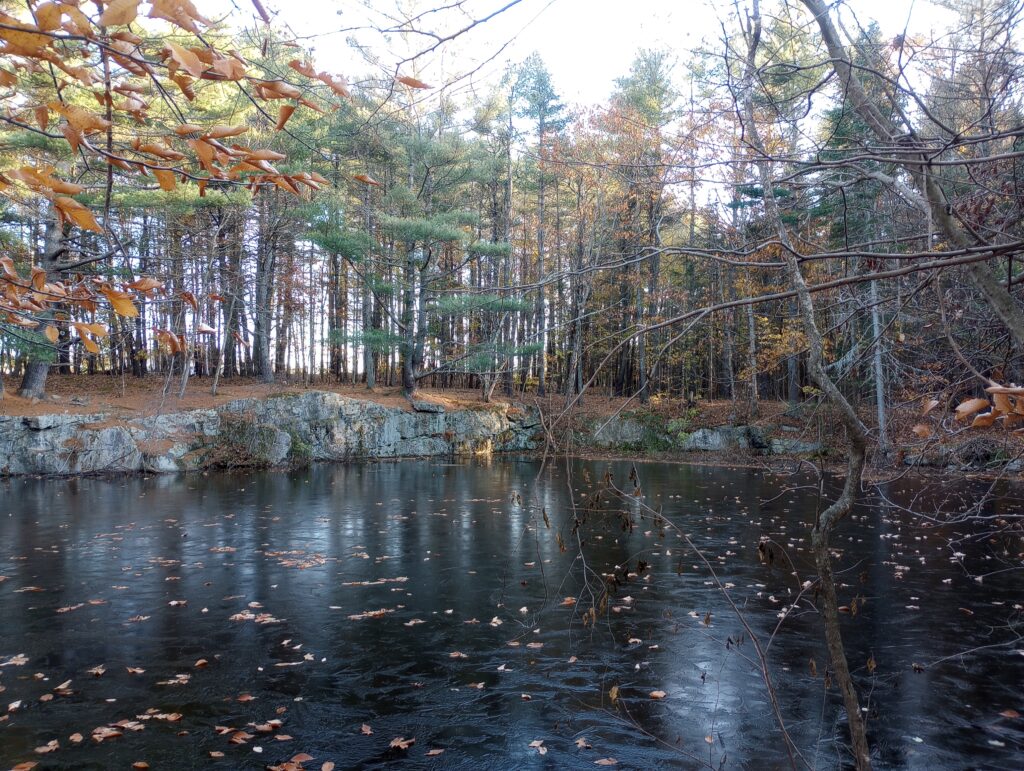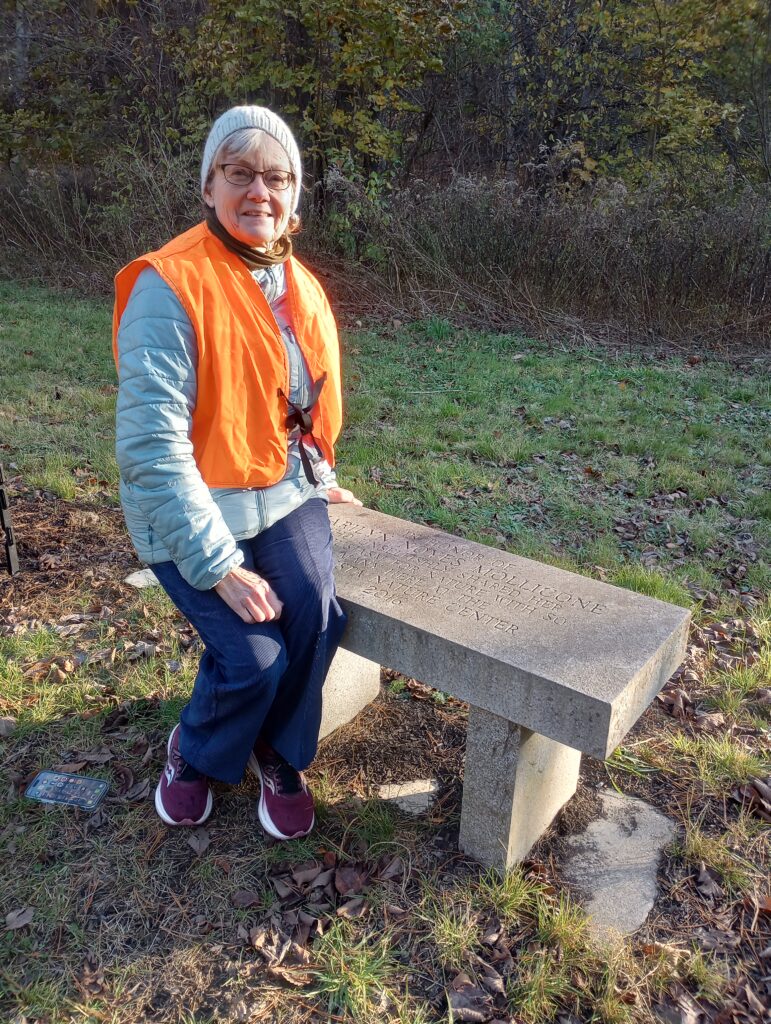
Let me introduce myself. I am Nina Mollicone, the daughter of Marilyn R. Noyes Mollicone, for whom a commemorative bench and tree, an Accolade Elm, are found in the field at Jordan Farm, part of the Augusta Nature Education Center. You might wonder if I am qualified to write a nature blog. To that question, I would say, “Yes,” and, “No.” My mother was the nature expert, a botanist and naturalist in passion and at heart. I learned about the natural world through nature walks I took with my mother throughout my childhood and adulthood, including time spent in the Augusta Nature Center when my mother became the Director of the Augusta Nature Camp, a day camp for children, run by the Augusta Nature Club. I was a teenager when this happened and still largely bored by the walks (strolls) in the woods, during which I pretty much ignored my mother’s attempts to teach me anything. Perhaps if my mother had hiked right along, I would have been more interested. But, then, she would not have found all the things that she found. She was fascinated by so many things. Two hours later, we might have progressed 200 yards. Me, I was zoned out in my own thoughts, wishing that the walks would hurry up and be over.

Nature hikes were not as bad as being dragged to mines, though. My parents belonged to the Kennebec Rock and Mineral Club. When I was a younger kid, weekends meant going to a mine for the day. I hated it! Hanging around in mine dumps, bored to tears, was not my idea of fun. My brother, on the other hand, loved it. He loved rocks and minerals so much that he studied geology and became, wait for it……a petroleum geophysicist. Impressive! Me? I became a nurse. Mines, and rock and mineral shows, were not a total waste of time, though. I learned to identify a lot of different rocks and minerals before I was 12 years old. Kinda fun as an adult to be able to call out the identity of a specimen that other folks are pondering over.

My interest in learning about nature resulted from a need to know when I got hired (by my mother) to be a camp counselor for the summer at the Augusta Nature Camp. It was only then that I paid attention to the names of the plants and the trees and the other aspects of nature around me. I learned well at least as to what was present in the Nature Center. I would say I have retained between 50 and 70% of what I learned back then. I have since added to that knowledge by a lot, largely due to walks taken with my mother, in the Nature Center and elsewhere, where we looked at every plant and tree we came to, and if we did not know, tried to figure it out. I remember one walk, years ago, through the family woodlot up to the Merrill Place, where the foundation of a barn was all that remained of a homestead that belonged to one of my mother’s childhood classmates. Across from the barn, where the house used to be, we found a large clump of a plant that my mother could not identify. Stumped, we took a specimen home and spent a couple hours of quality family time pawing through plant identification keys and books until we figured it out.

My interest in learning about nature resulted from a need to know when I got hired (by my mother) to be a camp counselor for the summer at the Augusta Nature Camp. It was only then that I paid attention to the names of the plants and the trees and the other aspects of nature around me. I learned well at least as to what was present in the Nature Center. I would say I have retained between 50 and 70% of what I learned back then. I have since added to that knowledge by a lot, largely due to walks taken with my mother, in the Nature Center and elsewhere, where we looked at every plant and tree we came to, and if we did not know, tried to figure it out. I remember one walk, years ago, through the family woodlot up to the Merrill Place, where the foundation of a barn was all that remained of a homestead that belonged to one of my mother’s childhood classmates. Across from the barn, where the house used to be, we found a large clump of a plant that my mother could not identify. Stumped, we took a specimen home and spent a couple hours of quality family time pawing through plant identification keys and books until we figured it out.

In more recent years, our walks in the Nature Center were mostly in the area known as Jordan Farm and along the Whitney Brook trail, a gravel road that parallels the brook and serves as access for the City of Augusta sewer line. Both areas are easy walking. The Whitney Brook Trail, in the spring, summer, and fall, is the best place to see a wide variety of blooming flora. The road/trail runs between Cony Street (Extension) and South Belfast Avenue, and, according to alltrails.com, is 1.2 miles from one street to the other and back. A small parking area exists at both ends. The Jordan Farm tract includes a quarry, a field, and trails through the woods. From Jordan Farm, one trail goes all the way to The Capital Area Technical Center (Cony High School). Be advised, this trail has some steep ups and downs. Other trails from Jordan Farm leads to other locations in the Nature Center. The Jordan Farm field is filled with an abundance of wildflowers, including many off-the-beaten path hidden gems. It is also the location of the bench and accolade elm that was placed in 2017 in honor of my mother’s long-time service to the Augusta Nature Education Center. Next time you are walking at Jordan Farm, take a few minutes to “set a spell” on the bench and engage with the sounds and smells and sights of nature that are free for the taking in the heart of the City of Augusta, Maine.

Nature Blog by Nina Mollicone Copyright December 4, 2023